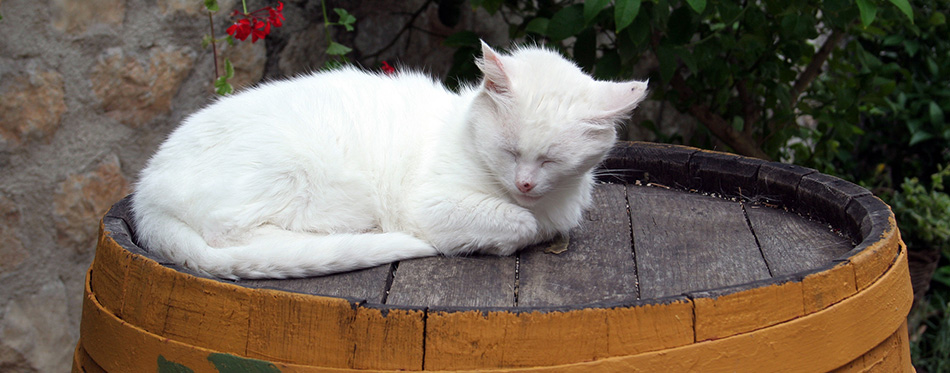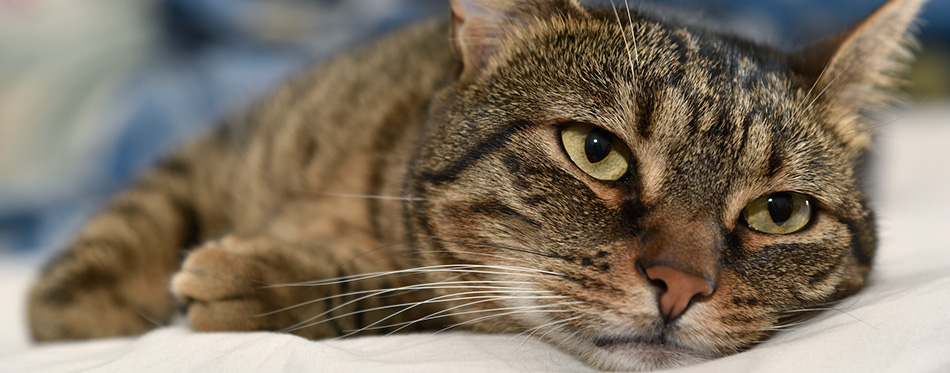Most people think that as pets, cats are hardier than dogs and do not suffer the same health conditions that their barking counterparts do. They are very agile, flexible, and fast so it is unthinkable that cats can also suffer from arthritis, but they do. They are very adept at masking the symptoms of arthritis like pain. Predators always see illness like arthritis as a weakness. And for a topnotch predator like cats, being weak is not something that they are proud of. That’s why the symptoms of arthritis in cats can be so subtle that the disease progresses without getting proper identification and diagnosis. The only time the cat-owner learns of the disease is when he or she brings the cat to the vet for a routine checkup.

Feline Arthritis
A degenerative disease process, arthritis in cats takes a long time to develop. It is for this reason that 9 out of 10 cats in their senior years show the classic signs and symptoms of feline arthritis. The disease has its beginnings in the juvenile and adult years of the cat. This is especially true for cats that are obese and those that may have the genetic condition we know as hip dysplasia. But what is more common among cats is elbow dysplasia which can lead to arthritis in cats’ front leg.
Obesity is a major culprit in cat arthritis. The cat’s body bears down on its joints and forces the two opposing surfaces of the joints to move closer. This can create friction and with friction comes tissue damage. The body is able to repair itself, however. Tissues of the joint that sustain injury or damage undergo a process of repair. It is unfortunate that the speed at which this repair process goes is not fast enough compared to the rate of tissue destruction.
The net effect is that there is more tissue destruction than there is tissue repair and regeneration. This is also the reason why the disease condition is very slow to develop. It often takes a number of years before the cat can start showing the symptoms of joint problems.
Aside from the effects of excessive weight on the joints, cats can also develop arthritis because of infection in the joints. It can also because of dislocation or other forms of tissue injury to the joints. Any issue on the tissues of the joints can lead to arthritis.
Manifestations of Arthritis in Cats
If you have a cat that is already in its middle or old age, there’s a chance that it already has arthritis. Most pet parents cannot be sure, however, if their cats have the disease or not. Here are some of the symptoms of arthritis in cats that you need to know.
- Limping
One of the most obvious signs of a problem in the joints is a limping gait. Your cat is trying to minimize the impact of its bodyweight on its joints. This is so that it will not be very painful when it moves. Watch how your cat walks. If it is limping in one leg, there’s a chance that this leg has arthritis. Your cat may also have difficulty getting up.
- Difficulty in Moving
The principal function of joints is to allow the movement of the opposing bones. If there is inflammation and pain in the joints, it will be difficult for the cat to move. It may try to move, but the pain may be so severe that the cat would rather not move at all. It may no longer be able to jump onto your kitchen countertop or go up the perch in its cat tree.
- Issues in the Cat’s Back
The spinal column on the back of your cat also has joints. And since arthritis is a condition of the joints, it is also possible that there is arthritis in the back of the animal. You will see a hunch-back appearance. The neck of your cat can also turn sore. The back legs can also show signs of weakness or lameness.
- Irritability
If you have a painful body part, you will also be very irritable if someone touches this painful part. That’s how cats will react if you are going to pick them up or pet them. And if you happen to touch their painful joints, they can snap, bite, and scratch you.
- Licking, Biting, and Chewing of the Affected Joint
This is your cat’s attempts to relieve the pain and discomfort that are present in arthritis. It will try to soothe the area by licking or biting on it. The unfortunate complication of incessant chewing and biting of the skin is that it can create cuts or openings on the surface of the skin. This can lead to infections. In some cases, there can also be hair loss in the affected area.
- Loss of Muscle Mass in the Affected Leg
This results from a decrease in the use of the leg muscles. If the joints are painful, the cat will not want to move. The more it moves, the greater the pain that it experiences. The sad effect of immobility is that the muscles don’t get the stimulus they need to maintain their tone. Without adequate muscle tone, the muscle fibers cease to grow and develop. As such, you will see the affected leg of the cat to be thinner than the unaffected leg. This is because of muscle atrophy in the affected leg.
- Tiredness
Painful joints are a major source of stress in cats. Stress can sap the energy out of any living organism. This makes the cat feel tired a lot easier and with greater frequency, too. It will no longer enjoy the things that it loves to do. You will also notice your cat spending more time resting or sleeping.
Treating Cat Arthritis
Because of the nature of arthritis, there is no definitive cure for it. The different kinds of arthritis in cats’ treatment options focus more on the alleviation of the symptoms. Treatments no longer focus on the restoration of joint anatomy and function. As much as possible, vets will help your cat to lead as normal lives as possible.
The administration of analgesics can help alleviate pain. By minimizing the pain experience, cats can resume some of their normal activities. Most vets give nonsteroidal anti-inflammatory drugs to help manage the pain. These drugs also have anti-inflammatory properties which can help reduce swelling in the joints. The reduction in both pain and swelling can help promote better mobility for the cat with arthritis.
When giving pain medications to cats, it is important to adhere to the dosage recommendations of the veterinarian. These medications come with side effects which you should also learn to identify. It is also important to learn about the adverse reactions that can occur with the administration of such drugs. The sudden development of hives, itching, and difficulty breathing should be enough to make you want to bring your cat to an emergency vet facility.
Cat arthritis supplements like glucosamine, MSM, and chondroitin can also help in the management of arthritis. These substances help in the faster repair and regeneration of the joint tissues. They can also help minimize the symptoms of arthritis. Omega-3 essential fatty acids can also provide relief because of their anti-inflammatory action.
Hydrotherapy can also be an important component of your cat’s arthritis treatment. This allows the cat to exercise its muscles so that they do not atrophy or shrink. The buoyant force of the water also eliminates impact forces on the joints of the cat. This helps make sure that your cat is able to move its joints while also strengthening its muscles. If the water is warm enough, it can also reduce the pain and swelling in the cat’s joints.

Managing Cat Arthritis in the Home
At home, you can also help in the care of your cat that has arthritis. You can institute weight reduction methods to help minimize the effect of bodyweight on the joints. You can give your pet low-calorie, high-protein cat food to address its weight issues while still giving it proteins for repairing and building tissues.
Cat arthritis massage also helps in the management of some of the arthritis symptoms. Massage can soothe painful joints and reduce swelling by the action of natural endorphins. Massage stimulates the brain into releasing more of these opioid-like substances to reduce pain and induce a feeling of wellness in the cat.
Giving your cat a heated blanket or a heated cat bed can also help relieve pain. These cat contraptions come with heating elements that relax the muscles and increase the space in the joints. As you increase the space in the joint, you can reduce the tendency of the opposing surfaces to rub against each other. This eliminates friction and allows for the faster healing of the joint tissues.
Cat arthritis is almost similar to canine arthritis. It can be due to different reasons yet the symptoms are the same. There’s impairment in your cat’s mobility as a result of pain and swelling in the joints. Addressing these requires your vet’s expertise and your own arthritis homecare solutions.
Sources:
- Arthritis & Degenerative Joint Disease in Cats – International Cat Care
- Arthritis in Cats: Symptoms and Treatment of Osteoarthritis in Cats – PetMD

